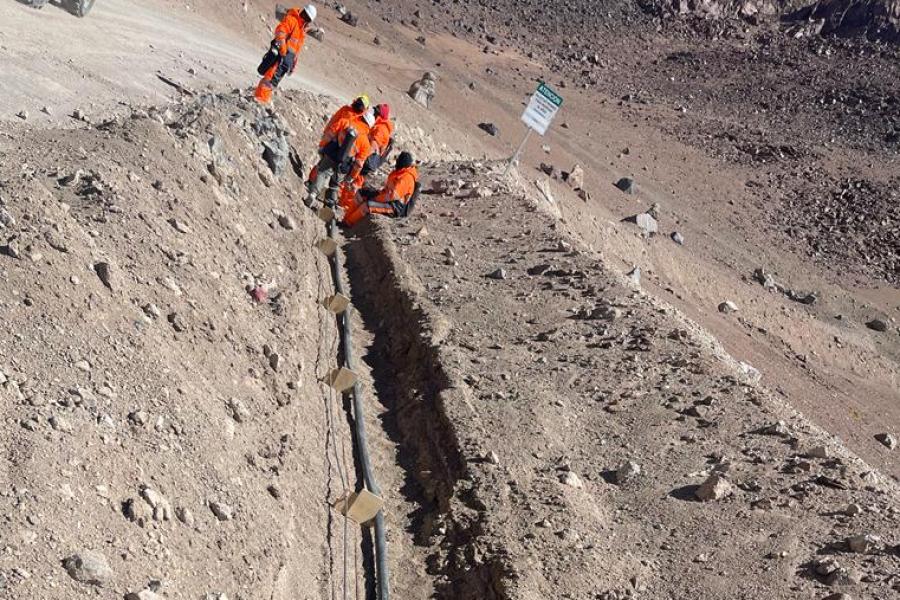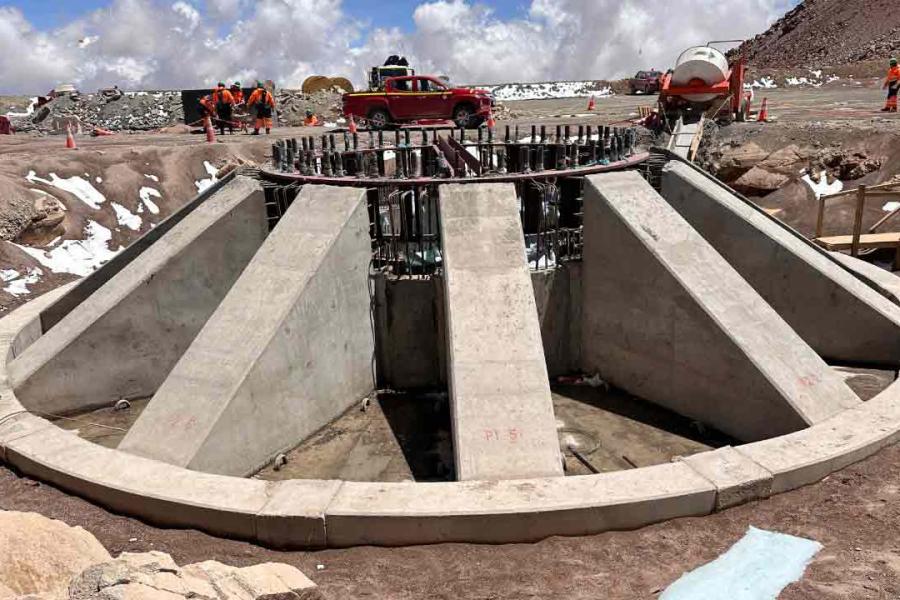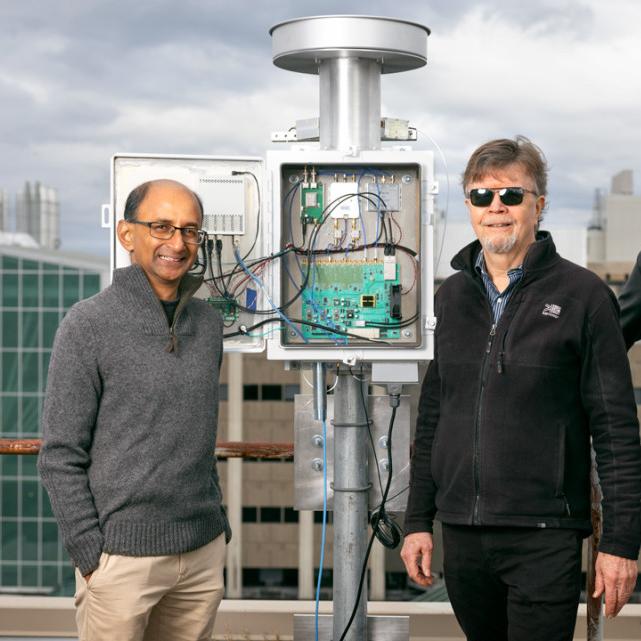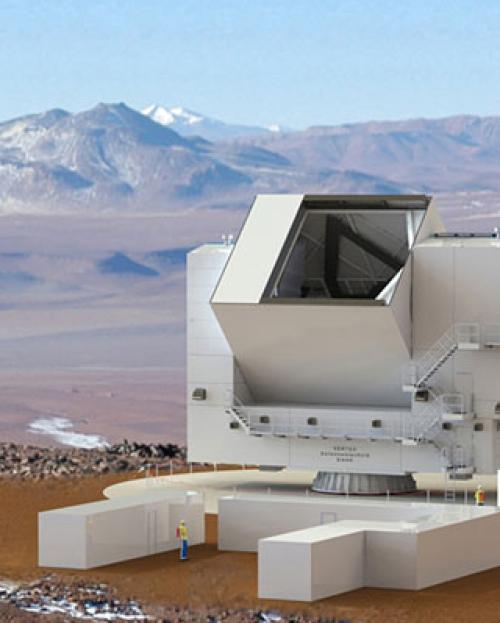The construction of the Fred Young Submillimeter Telescope (FYST, pronounced “feast”) being developed by CCAT Observatory Inc. , an international consortium of universities led by Cornell, is drawing closer to an end.
Work is poised to begin on a defining feature of the telescope, the “elevation” part that supports the upper structure and will contain the telescope’s mirrors. Unlike almost any other telescope to date, the part will be constructed from Invar, a special formulation of steel that has an extremely low coefficient of thermal expansion.
“This means that it doesn't get bigger when it's hot and it doesn’t shrink when it's cold,” said project manager Jim Blair, in the Department of Astronomy in the College of Arts & Sciences. “At least, it’s greatly, greatly reduced with Invar compared to regular steel. And that's important for the science because at the wavelengths that we are looking at thermal expansion would actually affect the data and could ruin it.”
Thus, said Blair, despite some similarities to other telescopes, the FYST “will be able to look regularly at frequency ranges very few other telescopes can even detect because of some of these design elements and material choices.”
The telescope’s mirrors are also cutting-edge technology, said Blair. They’re being built in the Netherlands by Airborne, one of the world’s premier carbon fiber companies.
“Like the Invar we’re using for the elevation structure, the mirrors are the secret sauce to being able to do our science,” he said. “Physicists have known how to measure in the submillimeter frequency ranges that the FYST is targeting for a long time, but before now nobody’s been able to build a telescope to do it – at least not at an affordable price. The carbon fiber structures that are supporting our mirrors are absolutely state of the art.”
The internal steel skeletal structures for yoke arms A and B, which will hold the three-story tall elevation part in place, are almost complete; once the elevation part is finished, all these massive sections will be mounted on top of the already completed lower portions, and the telescope will be nearly assembled. The project team estimates that by the end of 2023 they will begin to test the telescope in Germany.
Fred Young ’64, MEng ’66, MBA ’66, after whom the telescope is named in appreciation for his generous support of the project, recently visited the construction site. “Seeing the beginning of the construction of the telescope in Germany was enormously satisfying as the culmination of many years of planning and preparation,” he said. “What was particularly striking was the enormous size of the rotating azimuth base which is the first element to be completed. The rapid and precisely controlled movement facilitated by large electric motors was an impressive demonstration of its ability to scan the sky. We clearly have much to look forward to now.”
The proximity of the trial assembly site at Wessel GmbH in Xanten, Germany to the University of Cologne, a CCAT-prime partner, permits quick site visits and interaction with staff at Vertex Antennentechnik GmbH of Duisburg, Germany, the company designing the telescope.
“This allows us to have close cooperation with the constructor and follow in detail the finer points of the telescope development right down to the power socket locations,” said Ronan Higgins, CCAT-prime deputy project engineer at the University of Cologne. “I have travelled back and forth over the roads of the region following subassemblies from different suppliers. You appreciate what a massive effort it is to bring this telescope together and how many unseen people work in the background to bring all this together.”
Because of the extreme altitude of the FYST summit site on Cerro Chajnantor located in the Andes mountains of Chile – it will be the second highest telescope in the world, the highest being only fifty meters beyond it at the summit of the mountain -- the entire telescope is being constructed and pre-assembled in Germany, and will be disassembled into about 12 major sections and transported to Chile for reassembly.
“We'll take it apart in major sections, ship it to Chile and put it together, kind of like a Lego project,” said project manager Jim Blair. “And then we have a lot less work to do up at extreme altitude in Chile.”
Shipping the telescope to Chile is anticipated in 2024, but that will be a major undertaking, said Blair. The transport will be orchestrated by Vertex and is expected to take four months or longer.
“The logistics of moving such big parts are not at all simple; it’s a major, major movement,” said Blair.
In Chile, major work has been accomplished in recent months by Chilean contractor Consorcio FVV Ingeniería y Construcción Limitada. The nine kilometer trench running from the base camp where the observatory’s power generation system will be located to the mountain summit, carrying the main power cable and fiber optic cable for data, is complete. The project required first digging the trench, putting in a sand bed, laying the two cables plus a grounding cable, backfilling with sand, covering it with tiles and then danger utility tape – and then burying the entire nine kilometers. Cable access points (manholes) also had to be installed every 500 meters.
Work at the telescope site, at 18,400 feet, is complicated by the extreme altitude. Workers have to be trained and pass an exam to be registered to work at that height, and can work a maximum of 12-13 days at a time. For each day they work at extreme altitude, they must spend a day below 9,000 feet. The 108-person FYST construction crew is on a conservatively safe schedule of seven days on, seven days off.
Despite the challenges, they have nearly finished laying the foundation, which Blair said was “tricky to build and is very precisely done.” The concrete goes down about eight feet.
Because the Atacama Desert is an arid region, the site requires extensive grounding to protect from lightning. The construction crew will be digging a lattice trench in which large amounts of copper cable will be laid to create a grounding system.
A final project this spring will be a concrete container for an 80,000 liter fuel tank, to ensure that any possible fuel leak will not harm the environment. The containment will be one and half times the size of the fuel tank, explained Blair, so that it won’t overflow in case of snow or rain.
The main power generators, already procured, and the electronics cabinets, switchgear and transformers will be the last components installed at the base facility before the telescope itself arrives for installation at the summit. This work is projected to start in the third quarter of 2023, with the power system commissioned by early 2024, if not before.







